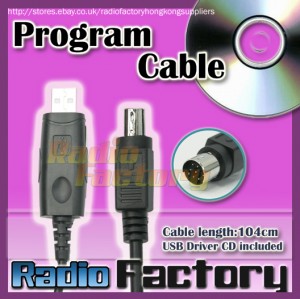For those interested in hearing about the Santa Cruz ARES Ham Radio response to this week’s communications outage in Santa Cruz, San Benito and Santa Cruz Counties. The cause of the outage were multiple cuts in the Fiber Optic cables which ended up shutting down almost all land line telephone, cellular and internet connections in most areas of the three counties listed above. This brought down our 911 dispatch system, hospital to hospital communications, ATM and Credit Card transactions. Comcast was the only provider I’m aware of who’s telephone, cable TV and internet stayed up throughout the event.
I noticed I had no cellular phone service around 0645 hours local, but still had internet (wifi via Comcast) so figured it was a local problem. Around 0745 hours Ellen got ahold of me via our Comcast landline as she was just finishing her shift at the hospital and let me know it was county wide. I turned on the radios and checked in to the Resource Net letting them know I would be available after 1000 hours. I monitored both nets as I drove to Watsonville to meet her.
When Ellen and I had finished up our first baby appointment in Watsonville (Yay! Babies!! She was 6 & 2/7ths weeks on Thursday we learned from our first ultrasound.) I went back home with her, packed my gear, and checked back in to the Resource Net at 1030 hours. Went to the office, set up a quick antenna outside and brought my radio in to the office figuring it might be hours before I was needed. About five minutes later they called me up and requested me at Sutter Maternity and Surgery Center.
I was at Sutter from approximately 1130-1645 hours and was quickly joined by two other volunteers: Kent, AB6KB, and later Barry, KI6QWQ. Mostly we monitored the events going on between the other served agencies and gave information to hospital staff. We were able to pass their large food order via radio to Monterey, where they still had phone service and they relayed the order to the vendor. We were preparing to place an order for their pharmacy as well but they were able to place that via another method.
My primary setup was my Yaesu FT-817nd with the antenna lead heading out a propped open door, I raised my 20′ fiberglass Jackite pole with my Larsen antenna that I usually use mag mounted on my car up on top of it. I also used my Kenwood TH-F6A for monitoring other frequencies (police, fire, and news media). My 5 watts hit all of the necessary repeaters with no problem, if I’d needed more power I had my 35-watt Mirage amplifier and a DieHard Portable Power 750 12-volt power source in the car.
The event taught me a lot about what pack in my “Go Kit” and that I really do need to build up a better collection of things that are ready to go on a shorter notice… I spent time around the house taking down an antenna, gathering antenna cable, extension cords, my battery backup, my antenna mast and mount, etc. I should really have a kit ready to go, even if it requires me to purchase a few duplicate items (antenna cable ready to go instead climbing through my attic taking down my current setup for example)
Here is a summary provided to the Santa Cruz ARES mailing list by Cap Pennell, KE6AFE:
Continue reading

